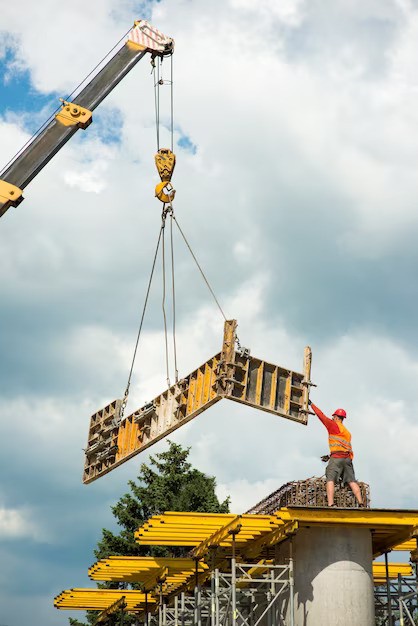Efficient and safe moving of heavy machinery is paramount in industrial settings where equipment relocation is routine. However, the process isn't merely about transporting large objects from one point to another; it's a highly intricate operation that demands meticulous planning, expertise, and adherence to strict safety protocols. From colossal cranes to massive presses, every piece of heavy machinery requires careful handling to prevent accidents, injuries, and costly damages. Delve into the critical importance of employing proper heavy machinery moving techniques from Alltracon, exploring best practices and essential safety measures that ensure smooth operations and safeguard the well-being of personnel and equipment alike.
Best Practices for Efficient and Safe Heavy Machinery Moving
- Comprehensive Risk Assessment: Before initiating any heavy machinery moving operation, conduct a thorough risk assessment to identify potential hazards and develop mitigation strategies. Consider factors such as equipment weight, dimensions, environmental conditions, and surrounding infrastructure.
- Detailed Planning and Coordination: Plan every aspect of the moving process meticulously, including route selection, equipment positioning, and personnel deployment. Ensure clear communication and coordination among all involved parties to streamline operations and minimize risks.
- Proper Equipment Selection and Inspection: Utilize suitable lifting and rigging equipment that is rated for the specific weight and dimensions of the machinery being moved. Regularly inspect all equipment for signs of wear, damage, or malfunction to prevent accidents during operation.
- Secure Load Handling: Implement robust securing mechanisms, such as chains, straps, or clamps, to stabilize the machinery during transport. Distribute the load evenly to prevent shifting and imbalance, which can lead to accidents or damage to the equipment.
- Skilled Personnel and Training: Entrust heavy machinery moving tasks to trained and experienced personnel who understand the intricacies of the equipment and the associated safety procedures. Provide ongoing training and certification to ensure competency and proficiency in handling various types of machinery.
- Adherence to Safety Protocols: Strictly adhere to established safety protocols and regulations governing machinery moving operations. That includes maintaining proper clearances, securing work zones, and utilizing personal protective equipment (PPE) to mitigate potential hazards.
Industrial Rescue: Safeguarding Personnel in Critical Situations
- Emergency Response Team Formation: Establish a dedicated industrial rescue team equipped with specialized training and equipment to respond swiftly to emergencies involving heavy machinery. Designate roles and responsibilities within the team to ensure efficient coordination during rescue operations.
- Risk Assessment and Preplanning: Conduct thorough risk assessments of industrial sites and machinery to identify potential rescue scenarios and develop pre planned response strategies. Consider factors such as equipment entrapment, confined spaces, and hazardous materials to tailor rescue plans accordingly.
- Utilization of Advanced Technologies: Incorporate advanced technologies, such as drones, thermal imaging cameras, and remote monitoring systems, to enhance situational awareness and aid in locating and assessing individuals in distress. These tools facilitate quicker and safer rescue operations, especially in challenging environments.
- Training in Confined Space Rescue: Provide specialized training to industrial rescue teams in confined space rescue techniques, including rope access, confined space entry procedures, and air monitoring. Equip personnel with the skills and knowledge needed to navigate confined spaces and extract individuals safely.
- Collaboration with External Agencies: Foster collaboration with external emergency response agencies, such as fire departments and medical services, to augment industrial rescue capabilities. Establish communication protocols and joint training exercises to ensure seamless coordination during complex rescue scenarios.
- Implementation of Lockout/Tagout Procedures: Prioritize the implementation of lockout/tagout procedures to de-energize and secure machinery before initiating rescue operations. That minimizes the risk of additional hazards and ensures the safety of rescue personnel and victims alike.
Conclusion:
The efficient and safe moving of heavy machinery is a critical aspect of industrial operations, requiring careful planning, execution, and adherence to strict safety protocols. We understand the importance of employing proper heavy machinery moving techniques to ensure smooth operations and safeguard the well-being of personnel and equipment.
By following best practices such as conducting comprehensive risk assessments, detailed planning and coordination, proper equipment selection and inspection, secure load handling, and adherence to safety protocols, Alltracon minimizes risks and enhances safety during heavy machinery moving operations.
Furthermore, Alltracon recognizes the importance of rescue in safeguarding personnel in critical situations. By forming dedicated industrial rescue teams, conducting risk assessments, utilizing advanced technologies, providing specialized training, fostering collaboration with external agencies, and implementing lockout/tagout procedures, we ensure swift and effective responses to emergencies involving heavy machinery. To learn more, call now at tel:440-635-3467.


No comments yet